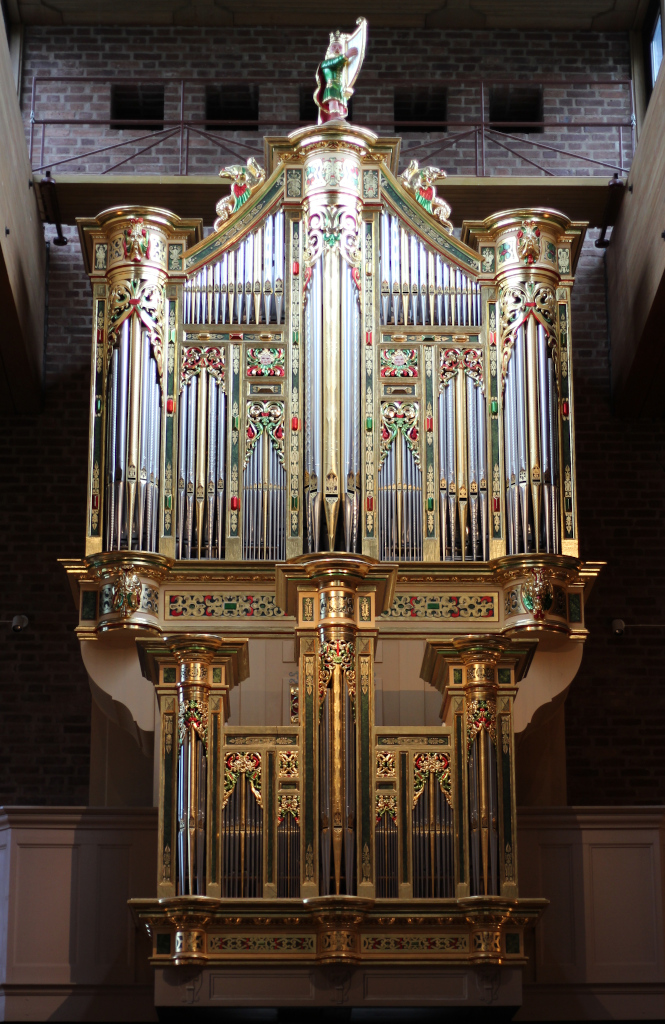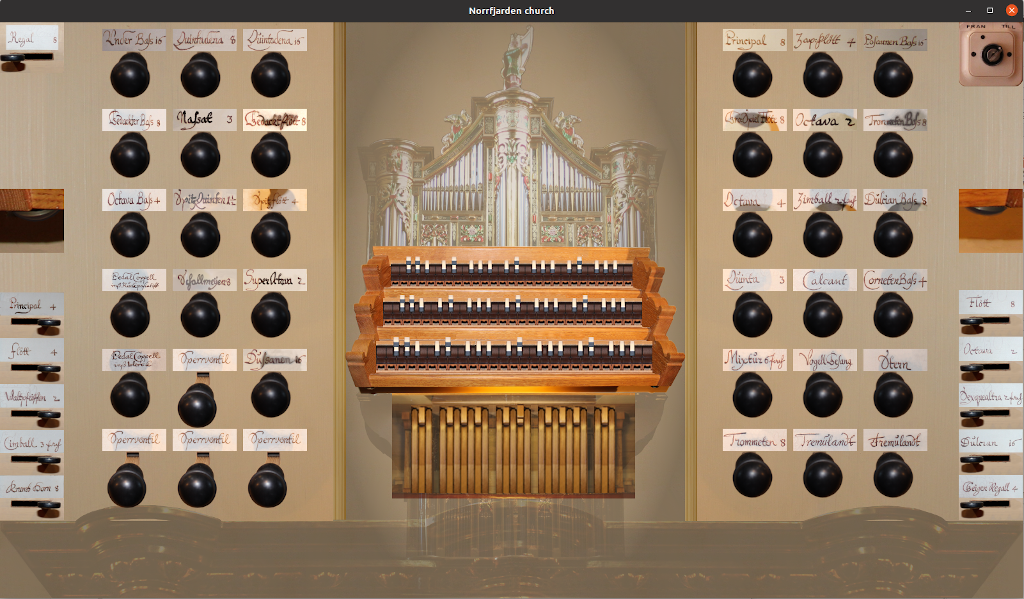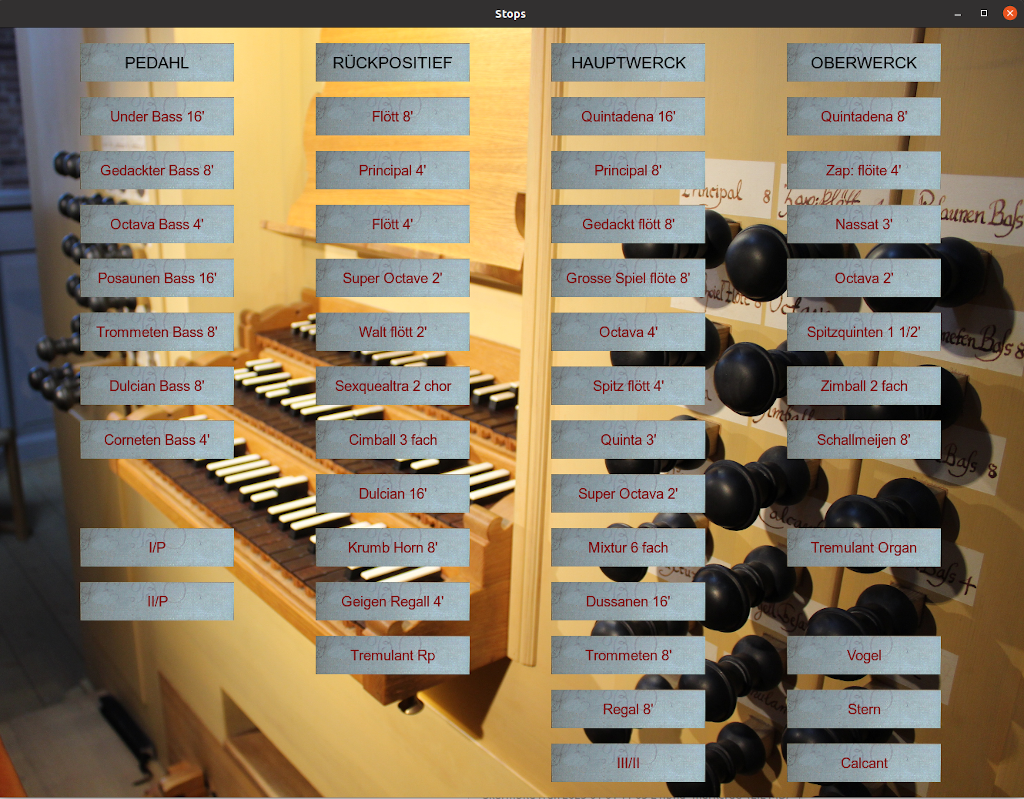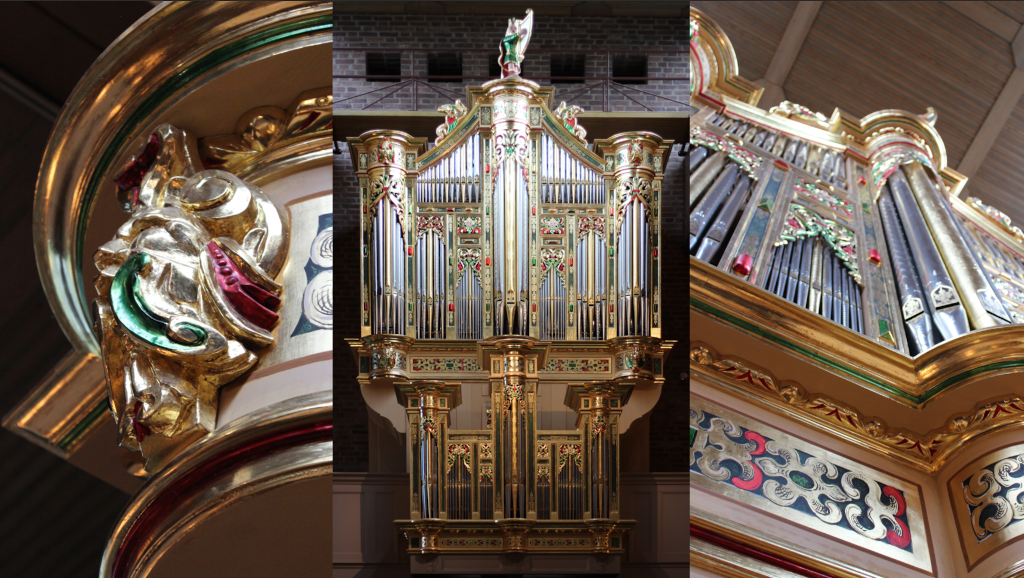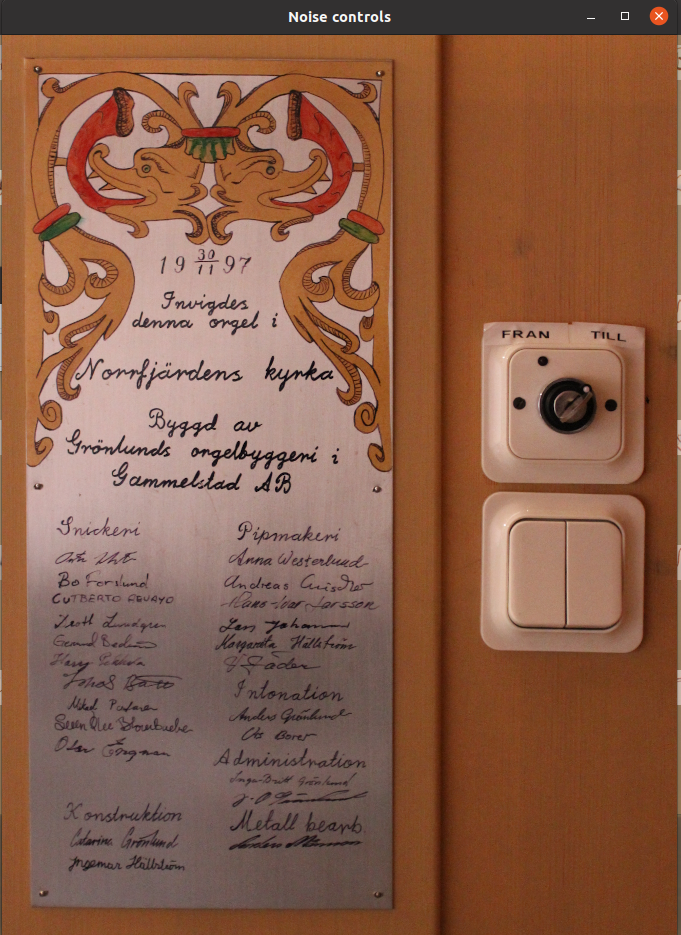This sampleset as a whole (including audio files, images and definition files) is licensed under a Creative Commons Attribution-ShareAlike 4.0 International License.
- Sample format: 44.1 kHz, 24 bit Stereo
- Multiple loops and releases
- Multiple panels for controls and additional features
- Temperaments are fully supported
- If you’re not prepared for what a true historic instrument is and will sound like, or if you’re only into romantic style organs and think that every pipe should be perfectly even and equal, please do everyone a favor and stay away from this sample set as it won’t be what you expect of it!
The grand organ on the organ loft in Norrfjärden church is the result of a research project conducted at the School of Music in Piteå/Luleå University of Technology. Together, Grönlunds Orgelbyggeri AB and many distinguished experts in various fields, under the general guidance of professor Hans-Ola Ericsson made sure that this replica instrument was finally finished and inaugurated in 1997.
As such, the instrument is a reconstruction of how an organ in the German Church in Stockholm might have looked and sounded in 1684. Much of the original parts have luckily survived to this day as two individual and heavily re-built organs in the Churches of Övertorneå and Hedenäset (very high up in the northern part of Sweden) as it in 1779 was sold and not destroyed.
While the instruments in Övertorneå and Hedenäset are wonderful in their own right and truly historic “gems” hidden in plain sight, they do not reflect the true original any longer. Lots of changes were made, not only to the pipe material, in 1780 (Övertorneå) and 1781 (Hedenäset) when the organ was split in two different instruments by the organ builder Matthias Swahlberg.
With this replica one can get an idea of the visual splendor of this magnificent instrument as it once was, and also enjoy the sounds and feel of a time when Sweden was a world power to reckon with! While the limited funding of the research project in some aspects forced an omittance of certain carved ornaments, no expenses were saved on the functionality and sound producing parts of the instrument though.
This wonderful instrument has made it possible for organists to really experience a historic instrument as it might have been at its peak in a very different period in time, ethos, style and aestethics. In many ways it’s a very humbling experience playing the organ for the first time as it won’t yield easily to modern ways of playing.
One of the most apparent differences can be found in the keyboard layout. That might totally confuse a modern organist. The bottom octave of the manuals utilise something called a “broken octave” – that is a “short octave” plus the additional F# and G# as extra keys just like the subsemitones for d#, d#1 and d#2 in the upper octaves. The pedal then uses another foreshortening feature to get the same bottom notes in the last octave but with a different layout.
The touch is in a way extremely sensitive and requires that the organist have total control over every finger and foot. Due to the direct mechanics of the tracker action every manual (and pedal) is slightly different in feel. While they all give the musician a great possibility to vary attacks and releases (thus enabling a high degree of expressiveness, especially in articulation) they are in no way easy to play well on as they are totally un-forgiving and reveal everything – both good and bad.
Another thing to mention is that the organ is tuned in meantone (1/4 comma) temperament and it’s pitch is about a semitone higher than modern concert pitch. This higher pitch is quite common on historic organs and has its own name, in german “hoher Chorton”. In the 1/4 comma meantone the semitones are not enharmonically interchangable. A c-sharp is always a c-sharp and cannot be interpreted as a d-flat as it’s tuned as a perfect third against the a. This tuning opens up a whole new tonal world for the right kind of music, while music that’s “wrong” for such temperament tend to sound really, really bad. One way to overcome the limitation of this temperament was to introduce multiple semitones called subsemitones. In the Norrfjärden organ there are separate keys for the (lower) e-flat and (upper) d-sharp.
The samples were recorded by Lars Palo in 2011 but the first complete release of this sample set could for various reasons not take place until 2023. The recording/sampling was done with a single stereo pair of microphones, though with different placements. One placement was used for the Rückpositief and another placement for Hauptwerck, Oberwerck and Pedahl. Recording was done directly into a laptop through a Alesis iO|2 device at 24/44100.
The disposition of the replica organ follows documents from 1684 with one addition in hommage to the first organ builder Paul Müller, a single Regal 8′ is placed in the position of where a Brustwerk was placed in the very first version of the original organ.
| Hauptwerck (II) | Oberwerck (III) | Rückpositief (I) | Pedahl |
|---|---|---|---|
| Principal 8′ | Quintadena 8′ | Principal 4′ | Under Bass 16′ |
| Quintadena 16′ | Zap: flöite 4′ | Flött 8′ | Gedackter Bass 8′ |
| Grosse Spiel flöte 8′ | Nassat 3′ | Flött 4′ | Octava Bass 4′ |
| Gedackt flött 8′ | Octava 2′ | Super Octave 2′ | Posaunen Bass 16′ |
| Octava 4′ | Spitzquinten 1 1/2′ | Walt flött 2′ | Trommeten Bass 8′ |
| Spitz flött 4′ | Zimball 2 fach | Sexquealtra 2 chor | Dulsian Bass 8′ |
| Quinta 3′ | Schallmeijen 8′ | Cimball 3 fach | Corneten Bass 4′ |
| Super Octava 2′ | Dulcian 16′ | ||
| Mixtur 6 fach | Krumb Horn 8′ | ||
| Dussanen 16′ | Geigen Regall 4′ | ||
| Trommeten 8′ | |||
| Regal 8′ (as Brustwerk) |
Effects are: Tremulant Rückpositief, Tremulant (whole organ), Vogelgesang, Stern
Couplers: Ow/Hw, Hw/P and Rp/P
Range for manuals: C,D,E,F – c3 + d#, d#1 and d#2
Pedal: C,D,E,F – d1 + d#
On the noise control panel it’s possible to switch on/off the motor sound with the upper large key button. The lower button that has two parts can with the left part switch on/off the stop noises and the right part can switch on/off all types of extra noises (that are not part of the samples themselves).
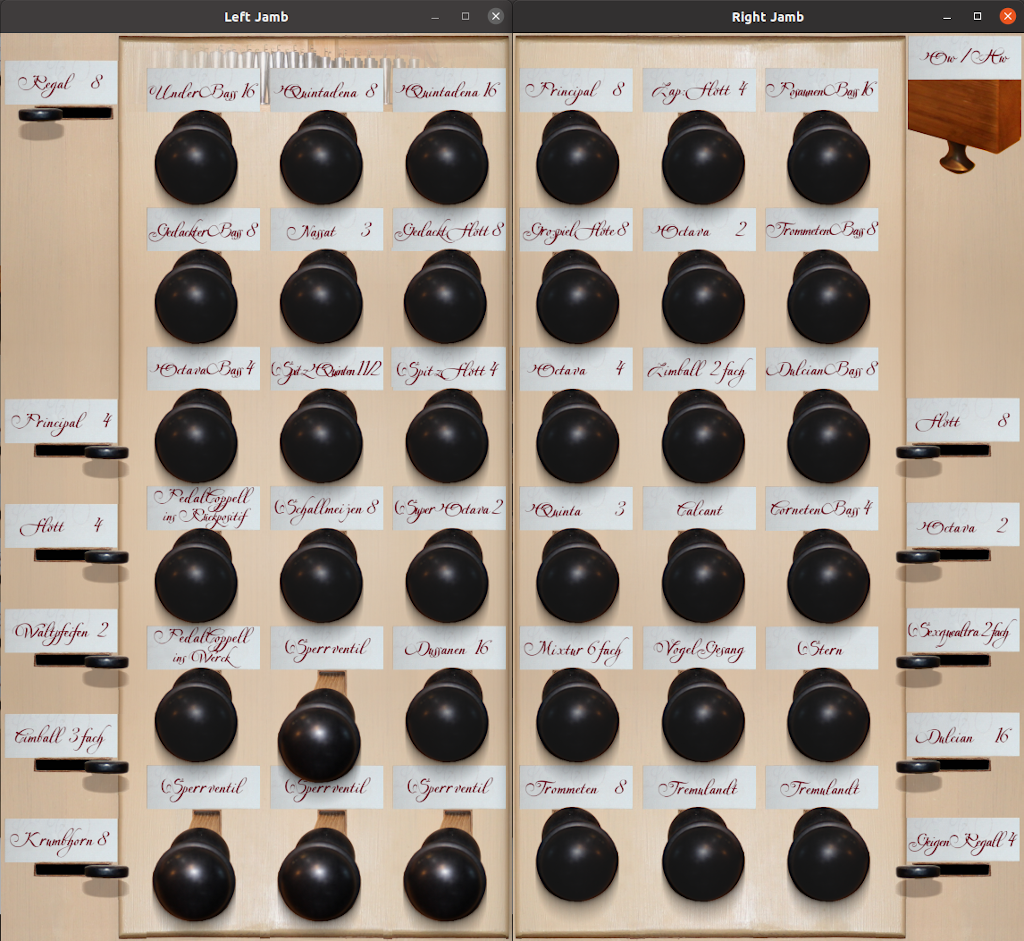
Direct download link: http://www.familjenpalo.se/sites/default/files/sampleset/packages/NorrfjardenChurch.orgue

